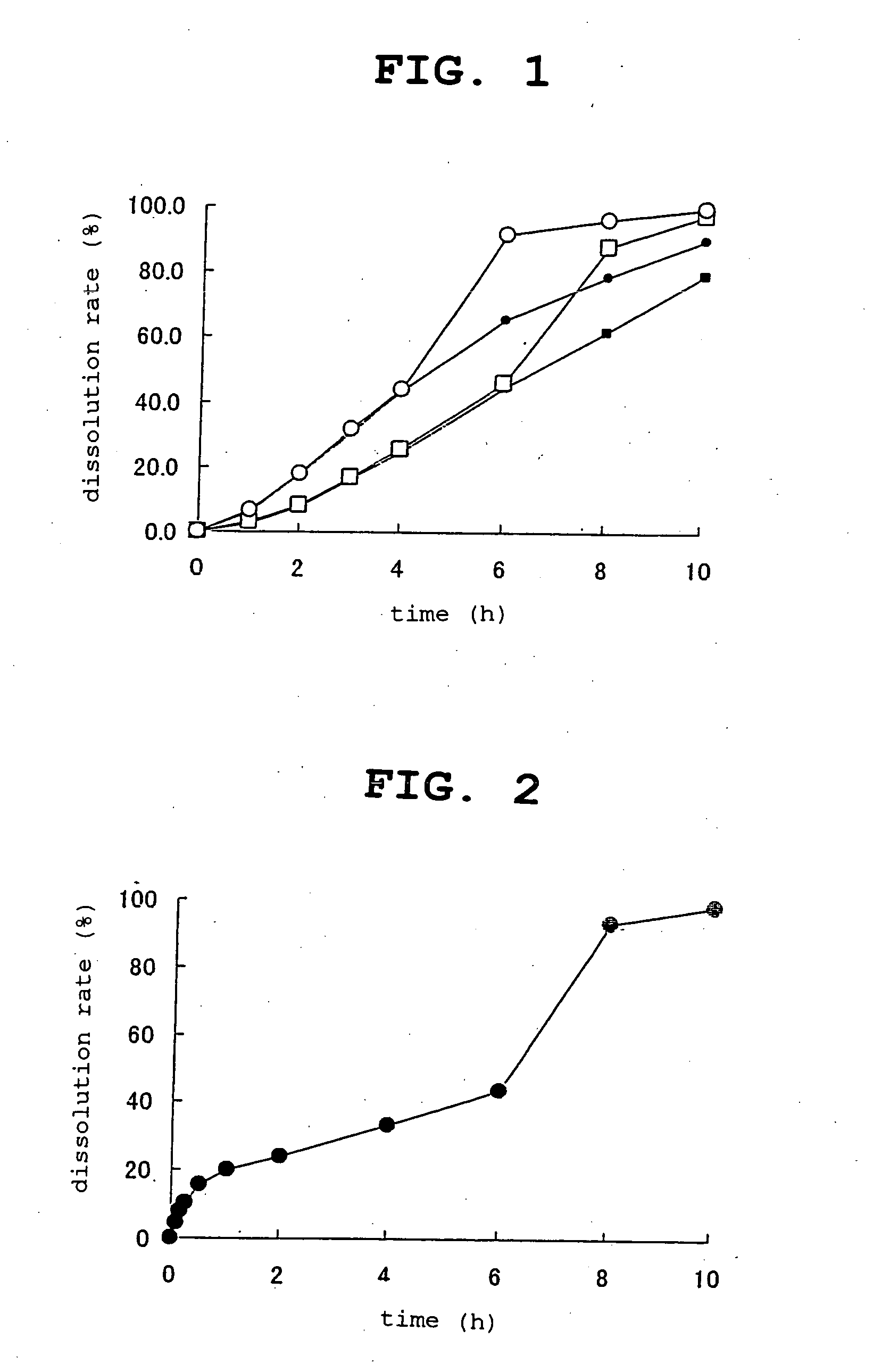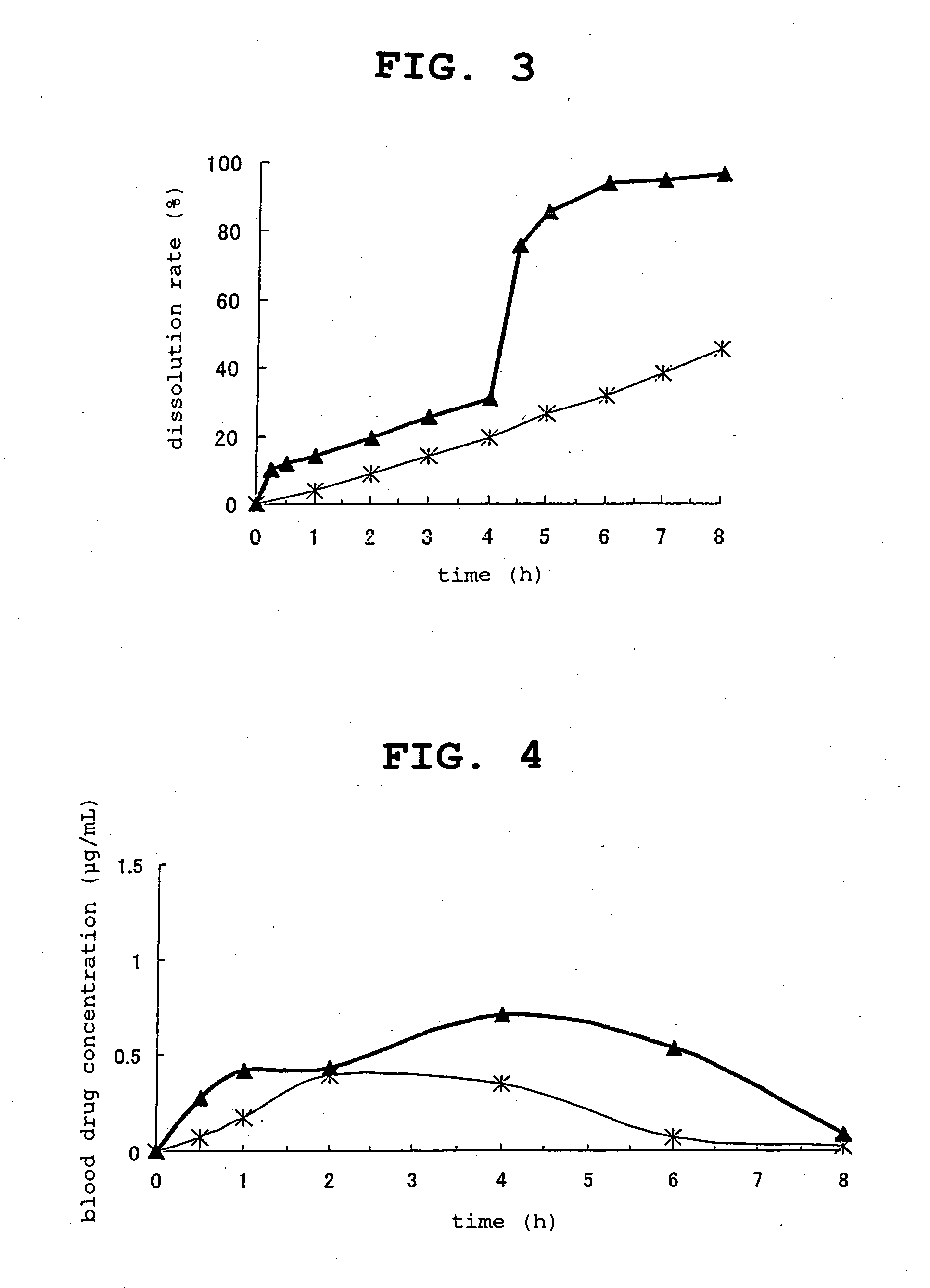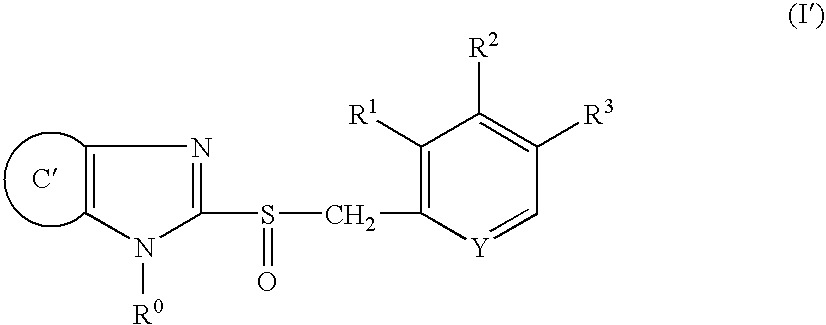Controlled release composition
a technology of composition and release rate, applied in the direction of digestive system, pill delivery, medical preparations, etc., can solve the problems of blood concentration not being maintained within the effective therapeutic range for a long period of time, and there is no report yet on the release-control strategy to be employed, so as to prevent the decrease of drug dissolution property and absorbability, the effect of reducing the amount of digestive jui
- Summary
- Abstract
- Description
- Claims
- Application Information
AI Technical Summary
Benefits of technology
Problems solved by technology
Method used
Image
Examples
reference example 1
tert-Butyl 2-hydroxyethyl(methyl)carbamate
[0548] To a mixture of 2-(methylamino)ethanol (30.04 g) and ethyl acetate (90 mL) was dropwise added a mixture of di-tert-butyl dicarbonate (87.30 g) and ethyl acetate (10 mL) under ice-cooling. After stirring at room temperature for 2 hrs., the mixture was concentrated under reduced pressure. The residue was dissolved in ethyl acetate (150 mL), washed with water (100 mL) and dried over anhydrous magnesium sulfate. Concentration under reduced pressure gave the title compound (66.19 g) as a colorless oil.
[0549]1H-NMR(CDCl3): 1.47(9H,s), 2.92(3H,s), 3.40(2H,t,J=5.1 Hz), 3.72-3.80(2H,m).
reference example 2
2-(Methylamino)ethyl Acetate Hydrochloride
[0550] To a mixture of 2-(methylamino)ethanol (1.50 g) and ethyl acetate (20 mL) was added di-tert-butyl dicarbonate (4.37 g) under ice-cooling. After stirring under ice-cooling for 1.5 hrs., acetic anhydride (2.08 mL), pyridine (1.78 mL) and 4-dimethylaminopyridine (0.12 g) were added. After stirring at room temperature for 2 hrs., ethyl acetate. (50 mL) was added to the reaction mixture, and the mixture was washed with water (50 mL), a 5% aqueous citric acid solution (50 mL) and saturated brine (50 mL). After drying over anhydrous magnesium sulfate, the mixture was concentrated under reduced pressure. To the residue was added a 4N hydrogen chloride—ethyl acetate solution (20 mL), and the mixture was stirred at room temperature for 2 hrs. Diethyl ether (10 mL) was added, and the precipitated solid was collected by filtration. The solid was dried under reduced pressure to give the title compound (2.93 g) as a white solid.
[0551]1H-NMR(DMSO-...
reference example 3
2-(Methylamino)ethyl Trimethylacetate Hydrochloride
[0552] To a mixture of tert-butyl 2-hydroxyethyl(methyl)carbamate (1.75 g) obtained in Reference Example 1 and ethyl acetate (15 mL) was added triethylamine (1.67 mL) and a mixture of trimethylacetyl chloride (1.35 mL), and ethyl acetate (5 mL) was dropwise added. After stirring at room temperature for 2 hrs., pyridine (1.62 mL) was added, and the mixture was stirred overnight at room temperature. Ethyl acetate (50 mL) was added to the reaction mixture, and the mixture was washed with water (50 mL), a 5% aqueous citric acid solution (50 mL) and saturated brine (50 mL), and dried over anhydrous magnesium sulfate. After concentration under reduced pressure, a 4N hydrogen chloride—ethyl acetate solution (10 mL) was added to the residue. After stirring at room temperature for 2 hrs., diethyl ether (10 mL) was added, and the precipitated solid was collected by filtration. The solid was dried under reduced pressure to give the title comp...
PUM
 Login to View More
Login to View More Abstract
Description
Claims
Application Information
 Login to View More
Login to View More - R&D
- Intellectual Property
- Life Sciences
- Materials
- Tech Scout
- Unparalleled Data Quality
- Higher Quality Content
- 60% Fewer Hallucinations
Browse by: Latest US Patents, China's latest patents, Technical Efficacy Thesaurus, Application Domain, Technology Topic, Popular Technical Reports.
© 2025 PatSnap. All rights reserved.Legal|Privacy policy|Modern Slavery Act Transparency Statement|Sitemap|About US| Contact US: help@patsnap.com



